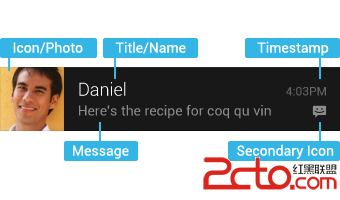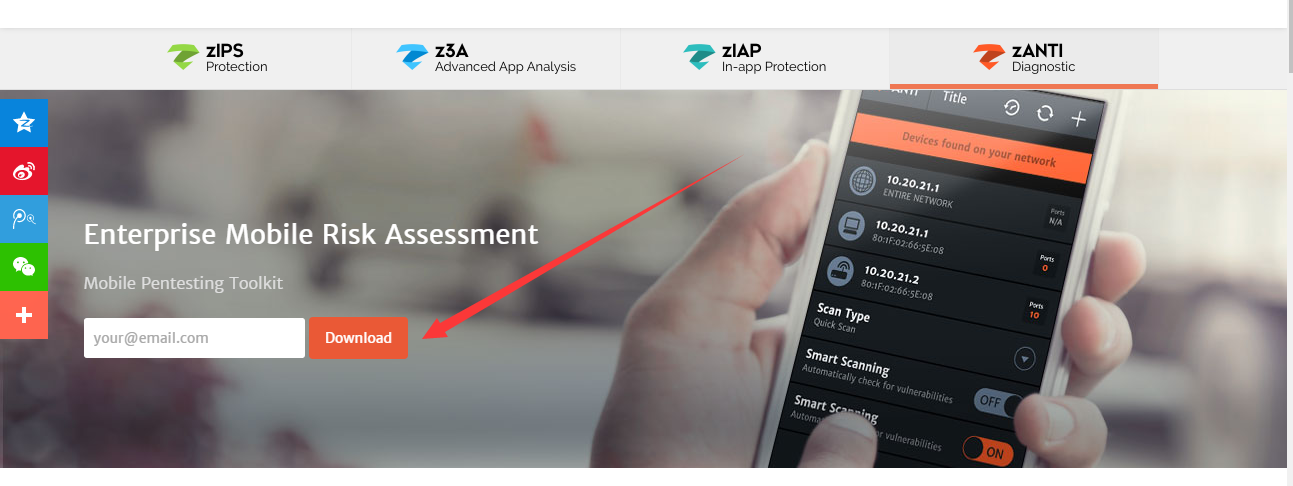編輯:關於Android編程
ThreadPool 先看成員變量Executor mExecutor。
Executor executor = anExecutor; executor.execute(new RunnableTask1()); executor.execute(new RunnableTask2()); ...盡管如此,Executor接口沒有明確要求執行過程是異步的。舉個最簡單的例子,一個Executor可以在調用者的線程中運行提交的任務。
class DirectExecutor implements Executor {
public void execute(Runnable r) {
r.run();
}
}更典型的是,任務也可以運行在其他的線程而不是調用者線程。以下代碼就是在Executor中生成新的線程。
class ThreadPerTaskExecutor implements Executor {
public void execute(Runnable r) {
new Thread(r).start();
}
}很多Executor的實現按照任務的實現方式和時間來分類,下面的代碼將提交的任務序列化給第二個Executor,闡述了一個組合的Executor。
class SerialExecutor implements Executor {
final Queue tasks = new ArrayDeque();
final Executor executor;
Runnable active;
SerialExecutor(Executor executor) {
this.executor = executor;
public synchronized void execute(final Runnable r) {
tasks.offer(new Runnable() {
public void run() {
try {
r.run();
} finally {
scheduleNext();
}
}
});
if (active == null) {
scheduleNext();
}
}
protected synchronized void scheduleNext() {
if ((active = tasks.poll()) != null) {
executor.execute(active);
}
}
}
}以上代碼簡答講就是執行一個 SerialExecutor時,先執行Runnable的run(),然後再從Tasks任務堆棧中找到當前激活的任務並執行。
Java裡面線程池的頂級接口是Executor,但是嚴格意義上講Executor並不是一個線程池,而只是一個執行線程的工具。真正的線程池接口是ExecutorService。
根據線程池的執行策略,Executor的execute()可能在新線程中執行,或者在線程池中的某個線程中執行,也可能是在調用者線程中執行。ExecutorService在Executor的基礎上增加了兩個核心方法:
1、Future submit(Runnable task)
2、
差異點:這兩個方法都可以向線程池提交任務,區別在於Runnable執行完run()有返回值,而Callable執行完call()後有返回值。
共同點:submit都返回Future對象,Future對象可以阻塞線程直到運行完畢,也可以取消任務執行和檢測任務是否執行完畢。
在executors類裡面提供了一些靜態工廠,生成一些常用的線程池:
1、newSingleThreadExecutor:創建一個單線程的線程池。這個線程池只有一個線程在工作,也就是相當於單線程串行執行所有任務。如果這個唯一的線程因為異常結束,那麼會有一個新的線程來替代它。此線程池保證所有任務的執行順序按照任務的提交順序執行。
2、newFixedThreadPool:創建固定大小的線程池。每次提交一個任務就創建一個線程,直到線程達到線程池的最大大小。線程池的大小一旦達到最大值就會保持不變,如果某個線程因為執行異常而結束,那麼線程池會補充一個新線程。
3、newCachedThreadPool:創建一個可緩存的線程池。如果線程池的大小超過了處理任務所需要的線程,那麼就會回收部分空閒(60秒不執行任務)的線程,當任務數增加時,此線程池又可以智能的添加新線程來處理任務。此線程池不會對線程池大小做限制,線程池大小完全依賴於操作系統(或者說JVM)能夠創建的最大線程大小。
4、newScheduledThreadPool:創建一個大小無限的線程池。此線程池支持定時以及周期性執行任務的需求。
5、newSingleThreadExecutor:創建一個單線程的線程池。此線程池支持定時以及周期性執行任務的需求。
下面再介紹下ThreadPoolExecutor函數,以便對線程池有進一步認識:
ThreadPoolExecutor(int corePoolSize, int maximumPoolSize,
long keepAliveTime, TimeUnit unit,
BlockingQueue
RejectedExecutionHandler handler);
corePoolSize: 線程池維護線程的最少數量
maximumPoolSize:線程池維護線程的最大數量
keepAliveTime: 線程池維護線程所允許的空閒時間
unit: 線程池維護線程所允許的空閒時間的單位
workQueue: 線程池所使用的緩沖隊列
handler: 線程池對拒絕任務的處理策略
當一個任務通過execute(Runnable)方法欲添加到線程池時:
1、如果此時線程池中的數量小於corePoolSize,即使線程池中的線程都處於空閒狀態,也要創建新的線程來處理被添加的任務。
2、如果此時線程池中的數量等於 corePoolSize,但是緩沖隊列 workQueue未滿,那麼任務被放入緩沖隊列。
3、如果此時線程池中的數量大於corePoolSize,緩沖隊列workQueue滿,並且線程池中的數量小於maximumPoolSize,建新的線程來處理被添加的任務。
4、如果此時線程池中的數量大於corePoolSize,緩沖隊列workQueue滿,並且線程池中的數量等於maximumPoolSize,那麼通過 handler所指定的策略來處理此任務。
也就是說,處理任務的優先級為:
核心線程corePoolSize、任務隊列workQueue、最大線程maximumPoolSize,如果三者都滿了,使用handler處理被拒絕的任務。
簡單的例子:
ThreadPoolTestMain.java
package threadpool.test;
import java.util.concurrent.ArrayBlockingQueue;
import java.util.concurrent.ThreadPoolExecutor;
import java.util.concurrent.TimeUnit;
public class ThreadPoolTestMain {
private static final int CORE_POOL_SIZE = 2;
private static final int MAX_POOL_SIZE = 4;
private static final int KEEP_ACTIVE_TIME = 3;
private static final int TASK_NUM = 10;
private static final int PRODUCE_SLEEP_TIME = 10;
static public void main(String[] args) {
// 構造一個線程池
ThreadPoolExecutor threadPool = new ThreadPoolExecutor(CORE_POOL_SIZE,
MAX_POOL_SIZE,
KEEP_ACTIVE_TIME,
TimeUnit.SECONDS,
new ArrayBlockingQueue(3),
new ThreadPoolExecutor.DiscardOldestPolicy());
for (int i = 1; i < TASK_NUM; i++) {
String name = "Task" + i;
try {
System.out.println("ThreadPoolTestMain: put a task: " + name);
threadPool.execute(new ThreadPoolTask(name));
Thread.sleep(20);
} catch (Exception err) {
err.printStackTrace();
}
}
}
}
ThreadPoolTask.java
package threadpool.test;
public class ThreadPoolTask implements Runnable {
private String mTaskName;
private static int CONSUME_SLEEP_TIME = 2000;
public ThreadPoolTask(String name) {
mTaskName = name;
}
@Override
public void run() {
// TODO Auto-generated method stub
System.out.println(Thread.currentThread().getName());
System.out.println("ThreadPoolTask :" + mTaskName);
try {
Thread.sleep(CONSUME_SLEEP_TIME);
} catch (Exception err) {
err.printStackTrace();
}
}
}
GalleryAppImpl
在androidManifest.xml中注冊Application標簽,應用創建時就會被初始化,維護應用內部全局數據。 private void initializeAsyncTask() {
// AsyncTask class needs to be loaded in UI thread.
// So we load it here to comply the rule.
try {
Class.forName(AsyncTask.class.getName());
} catch (ClassNotFoundException e) {
}
}Class.forName(AsyncTask.class.getName())會返回AsyncTask這個類,並要求JVM查找並加載AsyncTask 類,也就是說JVM會執行AsyncTask類的靜態代碼段。 public static void initialize(Context context) {
DisplayMetrics metrics = new DisplayMetrics();
WindowManager wm = (WindowManager)
context.getSystemService(Context.WINDOW_SERVICE);
wm.getDefaultDisplay().getMetrics(metrics);
sPixelDensity = metrics.density;
Resources r = context.getResources();
TiledScreenNail.setPlaceholderColor(r.getColor(
R.color.bitmap_screennail_placeholder));
initializeThumbnailSizes(metrics, r);
}GalleryUtil是Gallery的工具類,獲得了屏幕參數,WindowManager,Resource等。 @Override
protected void onCreate(Bundle savedInstanceState) {
…...
setContentView(R.layout.main);
if (savedInstanceState != null) {
getStateManager().restoreFromState(savedInstanceState);
} else {
initializeByIntent();
}
}savedInstanceState是在Activity在onPause時保存狀態用的,這裡暫時為null。 private void initializeByIntent() {
Intent intent = getIntent();
String action = intent.getAction();
if (Intent.ACTION_GET_CONTENT.equalsIgnoreCase(action)) {
startGetContent(intent);
} else if (Intent.ACTION_PICK.equalsIgnoreCase(action)) {
// We do NOT really support the PICK intent. Handle it as
// the GET_CONTENT. However, we need to translate the type
// in the intent here.
Log.w(TAG, "action PICK is not supported");
String type = Utils.ensureNotNull(intent.getType());
if (type.startsWith("vnd.android.cursor.dir/")) {
if (type.endsWith("/image")) intent.setType("image/*");
if (type.endsWith("/video")) intent.setType("video/*");
}
startGetContent(intent);
} else if (Intent.ACTION_VIEW.equalsIgnoreCase(action)
|| ACTION_REVIEW.equalsIgnoreCase(action)){
startViewAction(intent);
} else {
startDefaultPage();
}
}從這個函數看,如果從相冊應用圖標進入,會走startDefaultPage流程,如果外部打開圖片,會走startGetContent流程。先看默認的startDefaultPage流程吧。 public void startDefaultPage() {
PicasaSource.showSignInReminder(this);
Bundle data = new Bundle();
data.putString(AlbumSetPage.KEY_MEDIA_PATH,
getDataManager().getTopSetPath(DataManager.INCLUDE_ALL));
getStateManager().startState(AlbumSetPage.class, data);
mVersionCheckDialog = PicasaSource.getVersionCheckDialog(this);
if (mVersionCheckDialog != null) {
mVersionCheckDialog.setOnCancelListener(this);
}
}data裡面存了相冊頂層路徑:"/combo/{/mtp,/local/all,/picasa/all}"歡迎轉載和技術交流,轉載請幫忙注明出處,http://blog.csdn.net/discovery_by_joseph,謝謝!
 Android 通知欄Notification的整合 全面學習 (一個DEMO讓你完全了解它)
Android 通知欄Notification的整合 全面學習 (一個DEMO讓你完全了解它)
在android的應用層中,涉及到很多應用框架,例如:Service框架,Activity管理機制,Broadcast機制,對話框框架,標題欄框架,狀態欄框架,通知機制,
 [Android][Memory Leak] InputMethodManager內存洩露現象及解決
[Android][Memory Leak] InputMethodManager內存洩露現象及解決
[Android][Memory Leak] InputMethodManager內存洩露現象及解決 現象: 在特定的機型天語k_touch_v9機型上
 Android實訓案例(八)——單機五子棋游戲,自定義棋盤,線條,棋子,游戲邏輯,游戲狀態存儲,再來一局
Android實訓案例(八)——單機五子棋游戲,自定義棋盤,線條,棋子,游戲邏輯,游戲狀態存儲,再來一局
阿法狗讓圍棋突然就被熱議了,鴻洋大神也順勢出了篇五子棋單機游戲的視頻,我看到了就像膜拜膜拜,就學習了一下,寫篇博客梳理一下自己的思路,加深一下印象視頻鏈接:
 Android平台滲透測試套件--zANTI2.5
Android平台滲透測試套件--zANTI2.5
0x00 前言zANTI是一款Android平台下的滲透測試工具,支持嗅探已連接的網絡、支持中間人攻擊測試、端口掃描、Cookie獲取及路由安全測試等操作。該工具是由以色